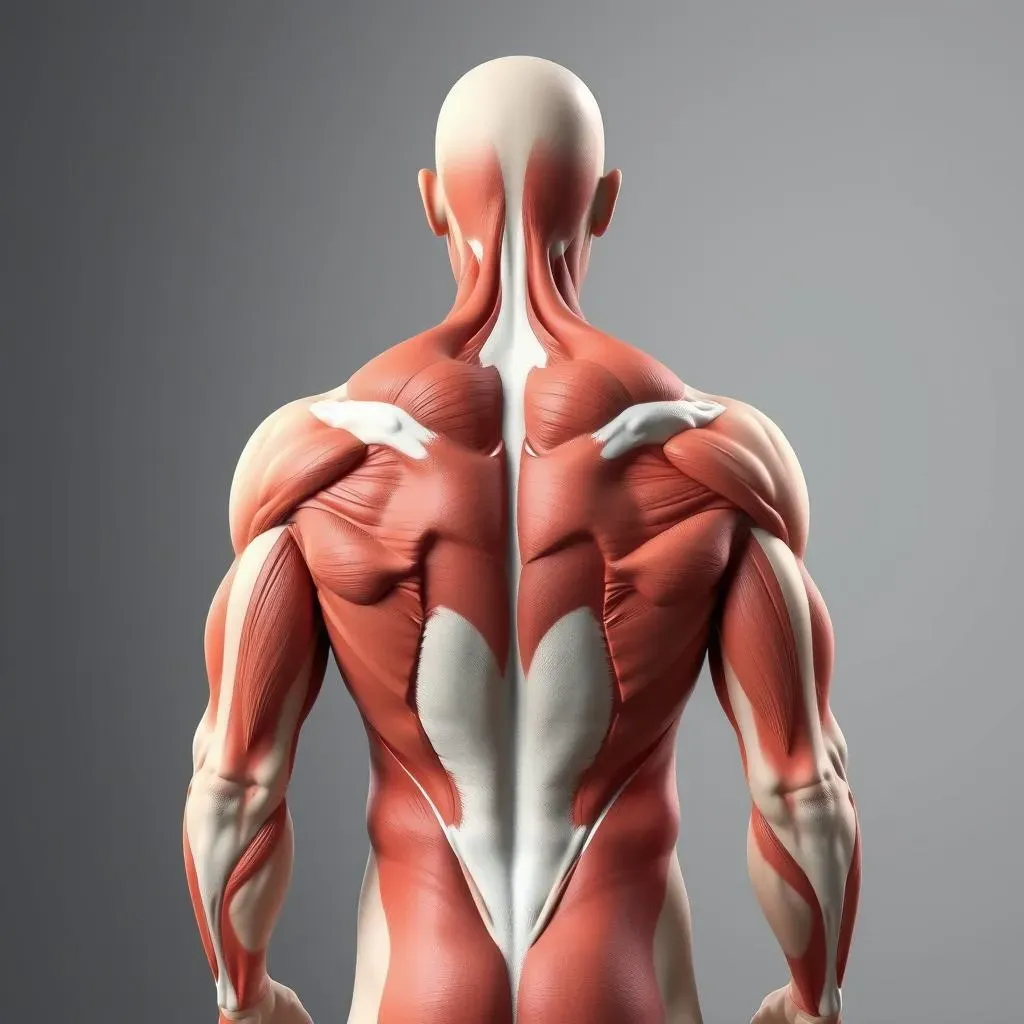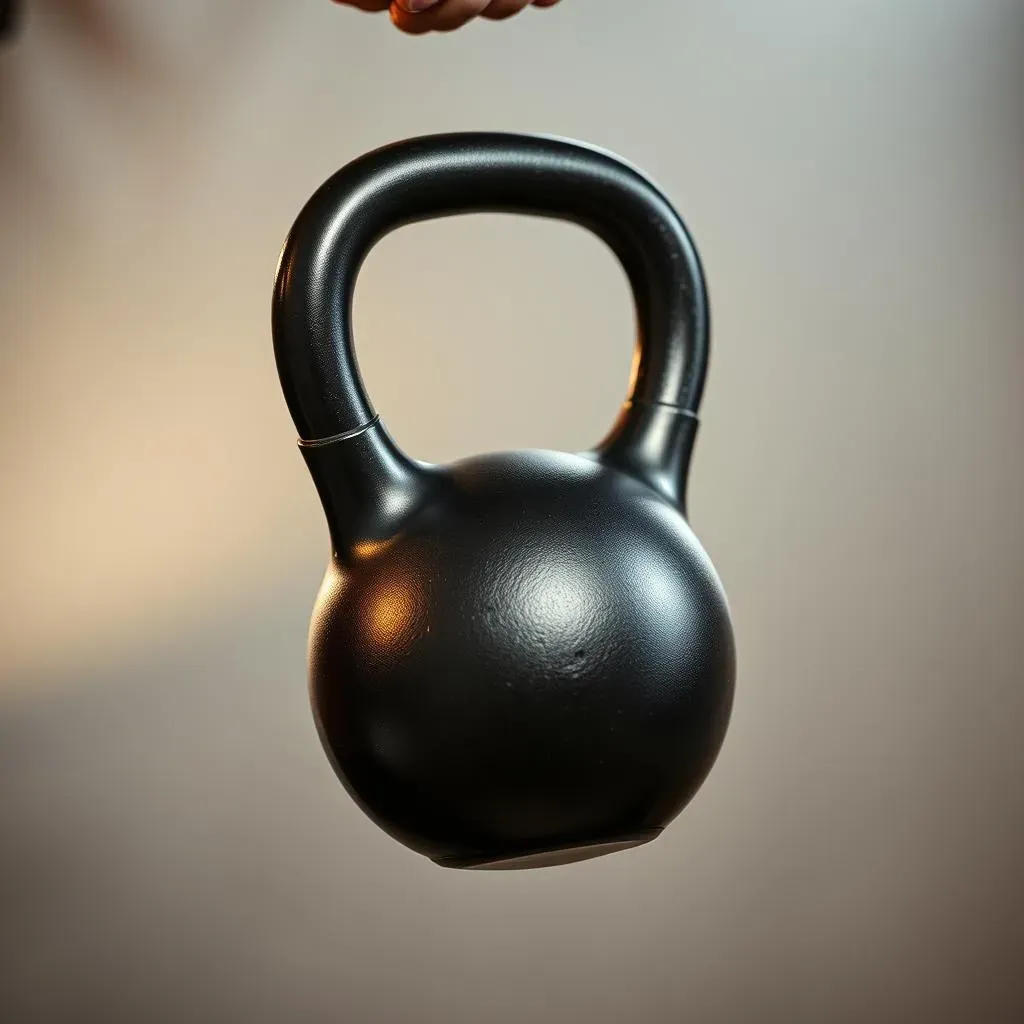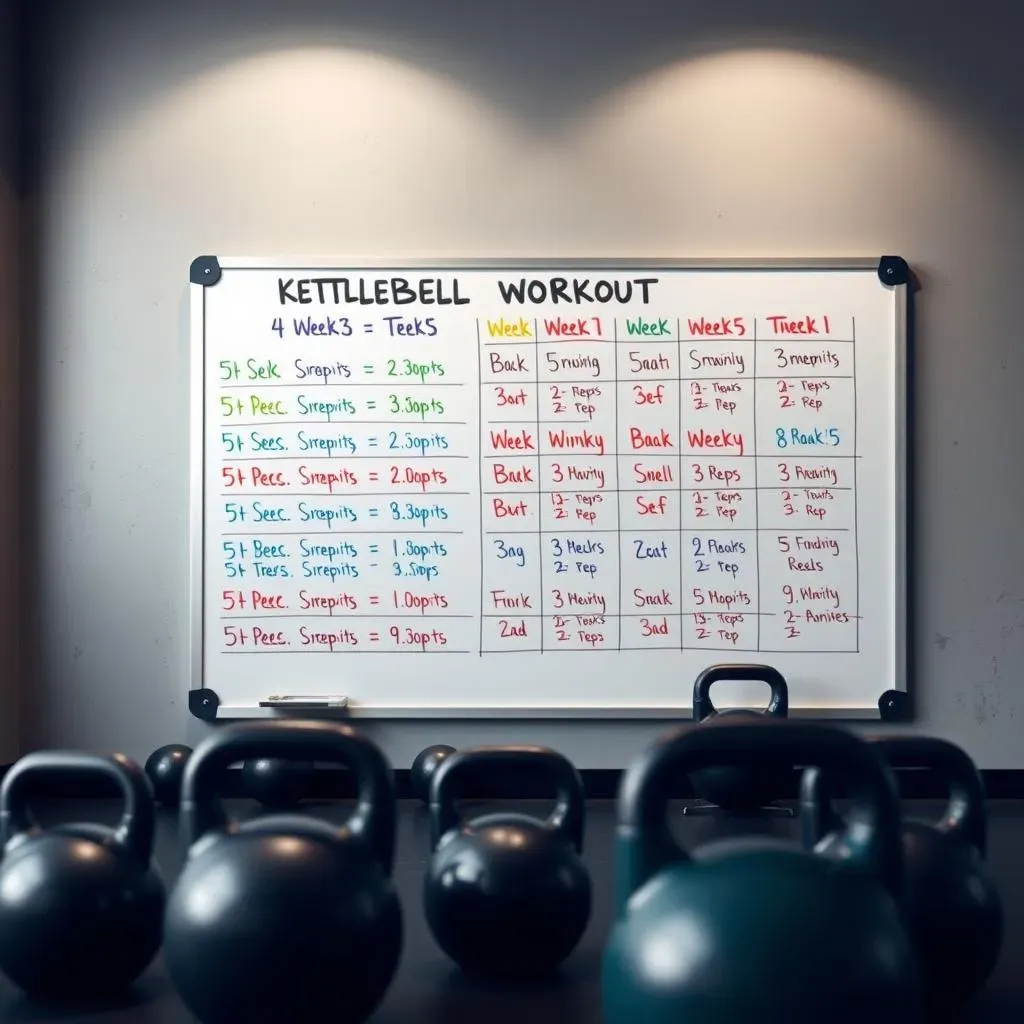Table of Contents
Ready to transform your back with a kettlebell.back workout? Forget endless hours at the gym; we're diving into the world of kettlebells, a single piece of equipment that can unlock incredible back strength and definition. This isn't just another workout fad; it's a practical, effective way to build a robust back, improve posture, and even boost your overall power. We'll start by taking a quick tour of your back muscles, so you know exactly what you're working. Then, we'll explore why kettlebells are a game-changer for back training. The heart of this article is the 10 best kettlebell back exercises that are designed to target every major muscle group in your back. We will also look at a sample 4-week workout plan to get you started. Get ready to feel the burn and see real results!
Understanding Your Back Muscles

Understanding Your Back Muscles
The Mighty Lats and Beyond
Let's talk about the back, it's not just one big slab of muscle. Think of it more like a complex team working together. First up, we've got the latissimus dorsi, or "lats" for short. These are those big, wing-like muscles that run down the sides of your back. They’re key for pulling motions, like rows, and contribute to that awesome V-shape everyone wants. Then you have the erector spinae, those long muscles that run along your spine. They keep you upright and help with bending and twisting. Imagine them as your body's natural stabilizers, constantly working even when you are not at the gym.
But wait, there's more! We also have the rhomboids, which are like the glue holding your shoulder blades together. These are often overlooked, but are very important for posture. The trapezius, or "traps," cover your upper back and neck, and they play a role in moving your shoulders and head. Finally, we can't forget smaller but important muscles like the teres major and the multifidus, which help with shoulder movement and spinal stability. Knowing this, it's clear that working your back is like conducting an orchestra—you've got to make sure each section is playing its part.
Key Back Muscles
Muscle Group | Function | Why it Matters |
|---|---|---|
Latissimus Dorsi (Lats) | Pulling motions, arm adduction | Creates the V-shape, power in pulls |
Erector Spinae | Spinal extension, posture | Keeps you upright, supports bending |
Rhomboids | Retraction of shoulder blades | Good posture, shoulder stability |
Trapezius (Traps) | Shoulder and neck movement | Supports upper body movements |
Teres Major | Shoulder extension and rotation | Assists in arm movement |
Why Kettlebells Are Great for Back Workouts

Why Kettlebells Are Great for Back Workouts
More Than Just Weights
so why pick up a kettlebell instead of dumbbells or a barbell? Well, kettlebells are not just some fancy-looking weights; they're designed to challenge your body in a unique way. Think of it like this: the offset center of gravity forces your muscles to work harder to control the weight, especially your back muscles. This means you're not just lifting; you're constantly stabilizing and engaging your core, which is your back's best friend. Kettlebells let you perform a wide range of movements that aren’t always easy with other weights, meaning you can hit your back from all sorts of angles.
Also, kettlebells are excellent for dynamic, full-body movements. Unlike some machines that isolate specific muscles, kettlebell exercises often involve multiple muscle groups at once. This is fantastic for your back because it promotes functional strength – the kind you need for real-life activities. Imagine picking up a heavy box; it's not just your arms doing the work. Your back is involved too, and kettlebells help you train those muscles in a way that’s relevant to that action. This translates to better posture, more stability, and a back that's not just strong, but also resilient.
Benefits in a Nutshell
- Versatility: Kettlebells offer a wide range of exercises for a complete back workout.
- Functional Strength: Movements mimic real-life actions, making your back stronger for daily tasks.
- Core Engagement: The offset weight forces your core to stabilize, indirectly strengthening your back.
- Full-Body Workouts: Many kettlebell exercises work multiple muscle groups, improving overall fitness.
- Improved Posture: Strengthening back muscles can lead to better posture and alignment.
Top 10 Kettlebell Back Exercises

Top 10 Kettlebell Back Exercises
The Classics: Rows and Deadlifts
Alright, let's get into the good stuff – the exercises! First off, we can't ignore the classics, like the kettlebell single-arm row. It's like a handshake with your back muscles, really targeting those lats and rhomboids. You'll feel it working, especially if you focus on pulling from your elbow and squeezing your shoulder blades. Then there's the kettlebell deadlift, a king of exercises for a reason. It hits almost every muscle in your back, building strength from your lower back all the way up to your traps. The hinge movement is key here. Think of it as picking something up with your legs, not your back. We're not trying to round our back here, keep it straight and strong.
Another killer is the chest-supported row with a kettlebell. This is great because it takes the pressure off your lower back, letting you focus on building upper back strength. This one really isolates the back muscles, especially if you go slow and controlled, squeezing at the top. And don't forget about the renegade row! It’s like a row and a plank had a baby, and that baby is a super back exercise. It not only hits your lats but also strengthens your core and shoulders. It’s a full-body move with a big back benefit. It's a tough one, but worth it!
More Great Moves for a Strong Back
Moving on, we have the kettlebell pullover, which is a fantastic way to work your lats and serratus muscles. Think of it as a big hug for your back, but with a weight. And if you are looking for a way to work your back and glutes, then the kettlebell swing is your move. It's explosive, it's dynamic, and it works your posterior chain like crazy. Then we have the kettlebell high pull, a great exercise for your upper back and traps. It is like an upright row but with more power involved. It's not just about lifting the weight; it's about using your hips and back to create the momentum. Then there's the kettlebell bent-over row, a great variation to target different parts of your back. By changing your grip or stance, you can change the muscles you are working.
And we cannot forget the kettlebell farmer's carry, it might seem too simple, but it's a very effective way to improve your grip and back strength. Holding heavy kettlebells while walking strengthens your back muscles and core. Finally, the kettlebell back extension is a great way to target your lower back. It's like a reverse crunch, but for your back, that strengthens those important erector spinae muscles. Remember, it's not about how much weight you lift, but how well you lift it. Focus on your form and the muscles you are working. Quality over quantity, always!
Exercise | Primary Muscles Worked | Why It's Effective |
|---|---|---|
Kettlebell Single-Arm Row | Lats, Rhomboids | Builds back width and thickness |
Kettlebell Deadlift | Erector Spinae, Lats, Glutes | Builds overall back strength |
Kettlebell Chest-Supported Row | Upper Back, Rhomboids | Isolates upper back muscles |
Kettlebell Renegade Row | Lats, Core, Shoulders | Full body strength and stability |
Kettlebell Pullover | Lats, Serratus | Improves lat strength and flexibility |
Kettlebell Swing | Posterior Chain, Glutes, Back | Explosive power and endurance |
Kettlebell High Pull | Upper Back, Traps | Develops upper back strength |
Kettlebell Bent-Over Row | Lats, Rhomboids | Targets different back angles |
Kettlebell Farmer's Carry | Grip, Back, Core | Improves grip and back strength |
Kettlebell Back Extension | Lower Back, Erector Spinae | Strengthens lower back muscles |
Sample 4Week Kettlebell Back Workout Plan

Sample 4Week Kettlebell Back Workout Plan
Getting Started: Your First Week
so you're ready to put it all together, right? Let's kick things off with a sample 4-week plan. The first week is all about getting your body used to the movements and focusing on form. We're not trying to break any records here; we're building a solid foundation. Think of it like this: you wouldn't try to run a marathon without training, and the same goes for kettlebells. We will start with three workouts a week, with rest days in between. For each workout, you'll start with a light warm-up, like some arm circles and bodyweight squats. Then, we will do our exercises.
For example, workout one could be a mix of kettlebell deadlifts, single-arm rows, and farmer's carries. You might do 3 sets of 8-10 reps for each exercise, focusing on keeping everything slow and controlled. Don't rush it; feel the muscles working. Workout two could be focused on kettlebell swings, bent-over rows, and back extensions. Again, go for 3 sets of 8-10 reps, and listen to your body. If something doesn't feel right, stop and adjust your form. Workout three can be a combination of renegade rows, chest-supported rows, and pullovers, for 3 sets of 8-10 reps.
Week Two and Three: Adding Intensity
Now that you've got the hang of things, it's time to ramp up the intensity a bit. In weeks two and three, we will increase the weight if you can do it while maintaining good form. If you can’t, just keep the weight and increase the repetitions or sets. You can also add some extra sets or reps to each exercise and reduce the rest time between sets. For example, you could aim for 3 sets of 12-15 reps or even 4 sets of 10-12 reps. It's all about pushing yourself a bit more while still maintaining control. You can also start playing with different variations of the exercises you've learned. For example, you can try a single-leg deadlift or a staggered stance row.
Keep your focus on proper form to avoid injury. The goal here is not to lift the heaviest weight, but to work your muscles effectively. Remember, consistency is key! Stick to your workout schedule, and don't be afraid to take an extra rest day if you need it. Your body needs time to recover and rebuild. It is also important to listen to your body and adjust the plan as needed. You can also add some extra core work to improve overall body stability and strength. Adding a plank or some Russian twists will help you build a stronger core, which will translate to a stronger back.
Week | Focus | Intensity | Sets/Reps |
|---|---|---|---|
Week 1 | Form and Technique | Low | 3 sets of 8-10 reps |
Week 2 | Increased Weight or Reps | Moderate | 3 sets of 12-15 reps or 4 sets of 10-12 reps |
Week 3 | Pushing Limits | Moderate to High | 4 sets of 12-15 reps |
Week 4 | Active Recovery and Light Workout | Low | 2 sets of 8-10 reps |
Week Four: Active Recovery and Light Workout
Finally, week four is about active recovery and a light workout, so we don’t over train. Your body has been working hard, and it needs time to recover. This week, we’re not trying to push ourselves to the limit; we’re giving our muscles a chance to repair and rebuild. You can still do some light kettlebell exercises, but focus on lower weights and higher reps. For example, you could do 2 sets of 8-10 reps of each exercise with a lower weight, or you can focus on bodyweight exercises like planks, bird dogs, and glute bridges. You can also use this week to do some stretching and foam rolling.
Remember, rest is just as important as training. It’s during your rest days that your muscles actually grow stronger. So, don't feel guilty about taking it easy this week. You've earned it! And don't forget to keep a log of your workouts and how you are feeling. This will help you track your progress and adjust your plan as needed. This plan is just a guide, so feel free to modify it to suit your fitness level and goals. The most important thing is to listen to your body and enjoy the process. You are building a stronger back, and that’s something to be proud of.
Wrapping Up Your Kettlebell Back Journey
So, there you have it – a complete guide to transforming your back with kettlebells. From understanding the muscles to mastering the exercises and following a structured plan, you're now armed with the knowledge to build a strong, resilient back. Remember, consistency is key. Don't expect to see changes overnight, but with regular practice and a focus on proper form, you'll not only see the improvements, but you’ll feel the difference in your daily life. So, pick up that kettlebell and start your journey to a stronger, healthier back today. Your back will thank you, and you might just surprise yourself with what you can achieve.